Muffler Right Side - Dual Exhaust
Removal Procedure
- Raise and suitably support the vehicle.
- Support the intermediate exhaust pipe and mufflers.
- Cut the intermediate exhaust pipe at the muffler in front of the weld.
- Remove the hangers from the muffler. (Chevrolet)
- Remove the muffler. (Chevrolet)
- Remove the muffler retaining bolts fromthe bracket. (Pontiac/Oldsmobile)
- Remove the muffler. (Pontiac/Oldsmobile)
Important: Cut(1) must be made as close to the weld(2) as possible to ensure adequate overlap for clamping.
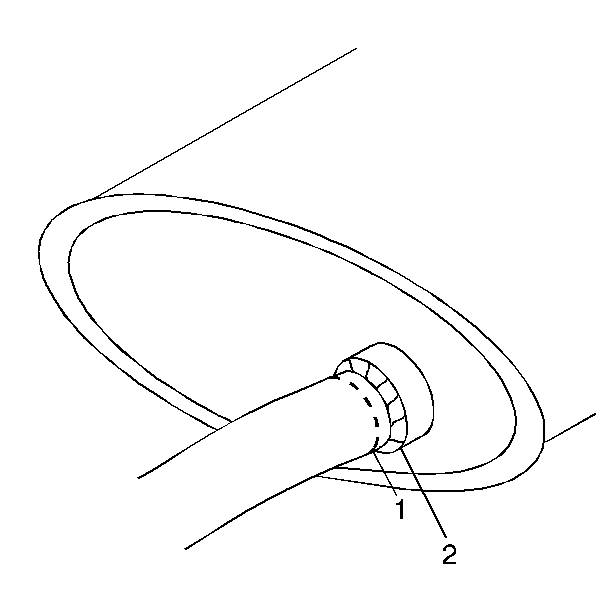
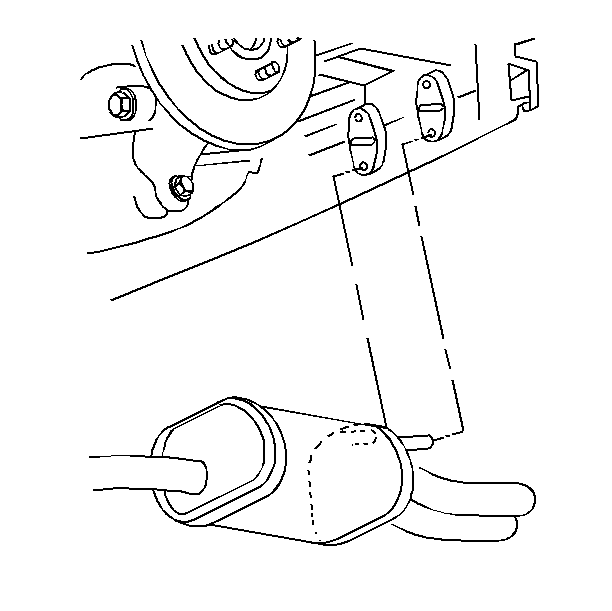
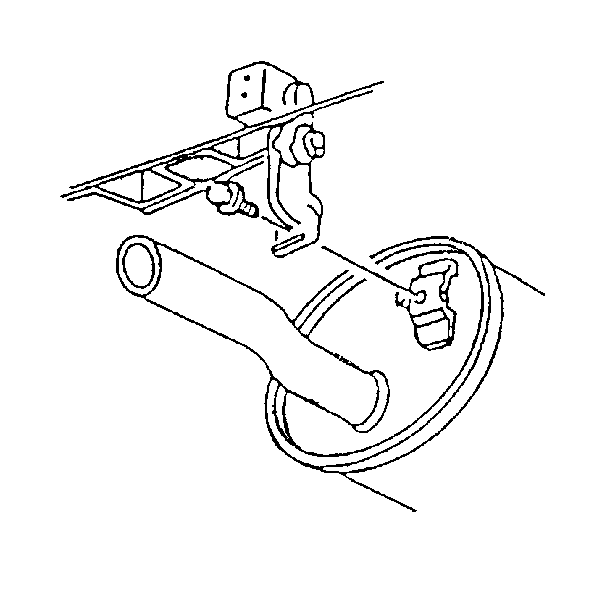
Installation Procedure
- Install the clamp to the end of the muffler. Do not tighten the clamp.
- Install the muffler.
- Install the hangers to the muffler. (Chevrolet)
- Install the muffler retaining bolts to the brackets. (Pontiac/Oldsmobile)
- Lower the vehicle.
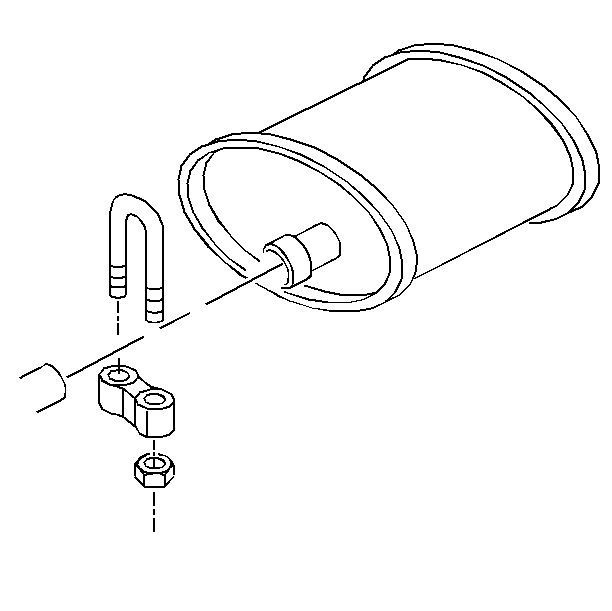

Tighten
Tighten the clamp nut to 50 N·m (37 lb ft).
Notice: Use the correct fastener in the correct location. Replacement fasteners must be the correct part number for that application. Fasteners requiring replacement or fasteners requiring the use of thread locking compound or sealant are identified in the service procedure. Do not use paints, lubricants, or corrosion inhibitors on fasteners or fastener joint surfaces unless specified. These coatings affect fastener torque and joint clamping force and may damage the fastener. Use the correct tightening sequence and specifications when installing fasteners in order to avoid damage to parts and systems.
Tighten
Tighten the clamp nut to 50 N·m (37 lb ft).
Notice: Use the correct fastener in the correct location. Replacement fasteners must be the correct part number for that application. Fasteners requiring replacement or fasteners requiring the use of thread locking compound or sealant are identified in the service procedure. Do not use paints, lubricants, or corrosion inhibitors on fasteners or fastener joint surfaces unless specified. These coatings affect fastener torque and joint clamping force and may damage the fastener. Use the correct tightening sequence and specifications when installing fasteners in order to avoid damage to parts and systems.
Muffler Left Side - Dual Exhaust
Removal Procedure
- Raise and suitably support the vehicle.
- Support the left-hand muffler and crossover pipe.
- Cut the intermediate exhaust pipe closest to the left side muffler bend (Chevrolet).
- Remove the clamp at the intermediate exhaust pipe (Pontiac and Oldsmobile).
- Remove the hangers from the muffler.
- Remove the muffler and the crossover pipe.
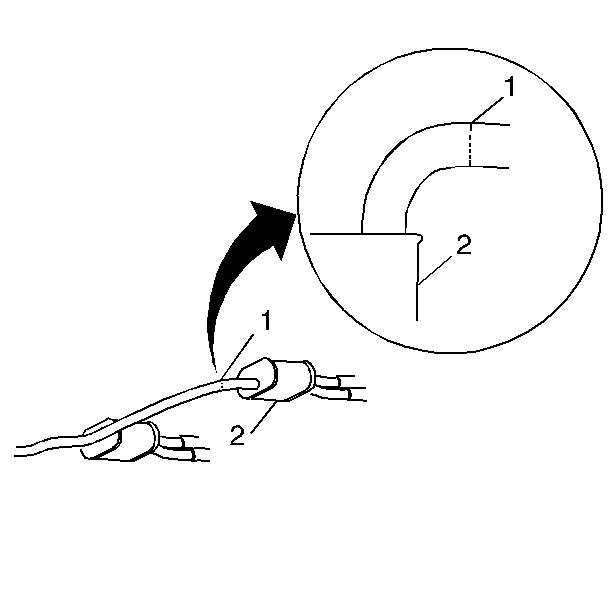
Important: Cut(s) must be made on the intermediate straight pipe closest to the curve coming out of the left side muffler. Do not cut on the curve or bend.
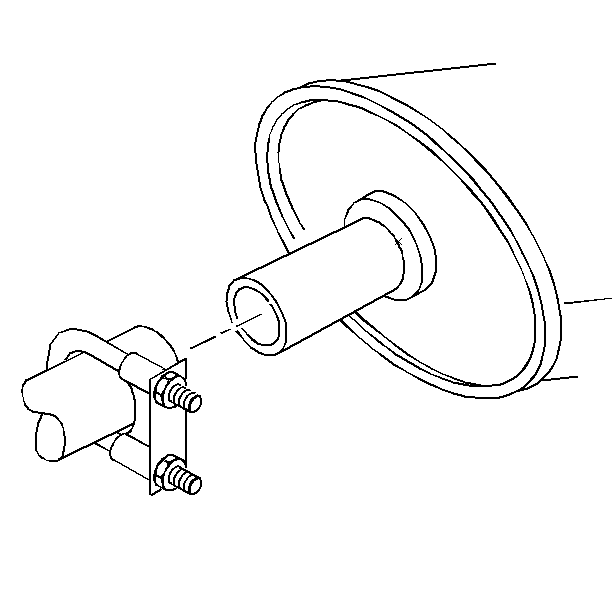

Installation Procedure
- Install the clamp to the end of the muffler (Chevrolet). Do not tighten the clamp.
- Install the muffler (Chevrolet).
- Install the muffler and crossover pipe (Pontiac and Oldsmobile).
- Install the hangers to the muffler.
- Lower the vehicle.


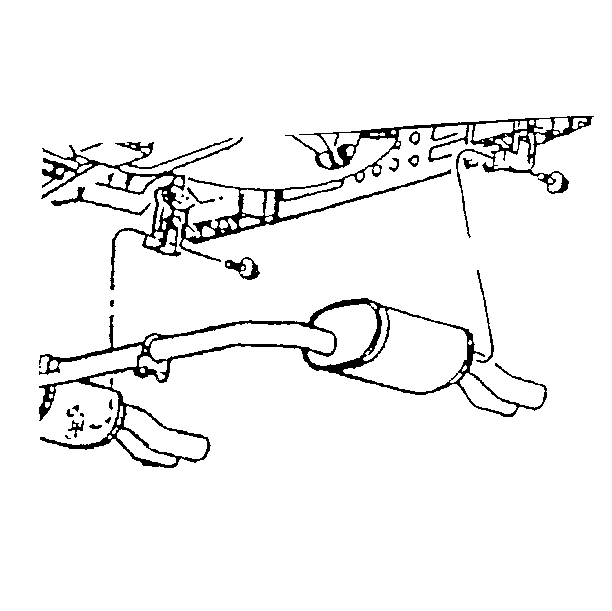
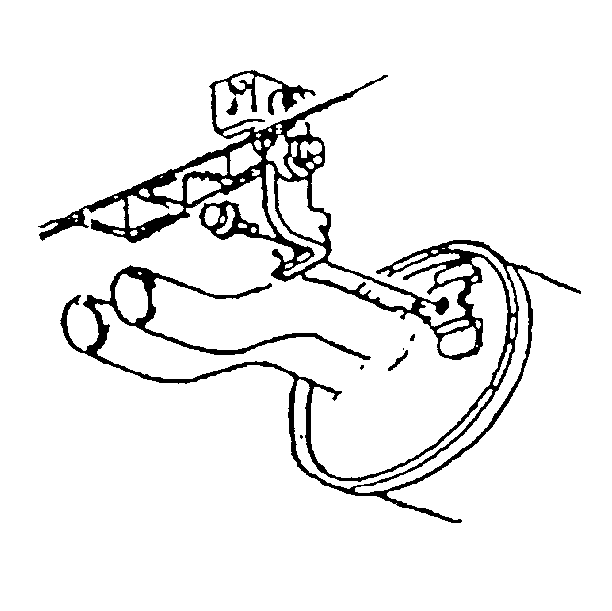
Tighten
Tighten the clamp nuts to 50 N·m (37 lb ft).
Notice: Use the correct fastener in the correct location. Replacement fasteners must be the correct part number for that application. Fasteners requiring replacement or fasteners requiring the use of thread locking compound or sealant are identified in the service procedure. Do not use paints, lubricants, or corrosion inhibitors on fasteners or fastener joint surfaces unless specified. These coatings affect fastener torque and joint clamping force and may damage the fastener. Use the correct tightening sequence and specifications when installing fasteners in order to avoid damage to parts and systems.
